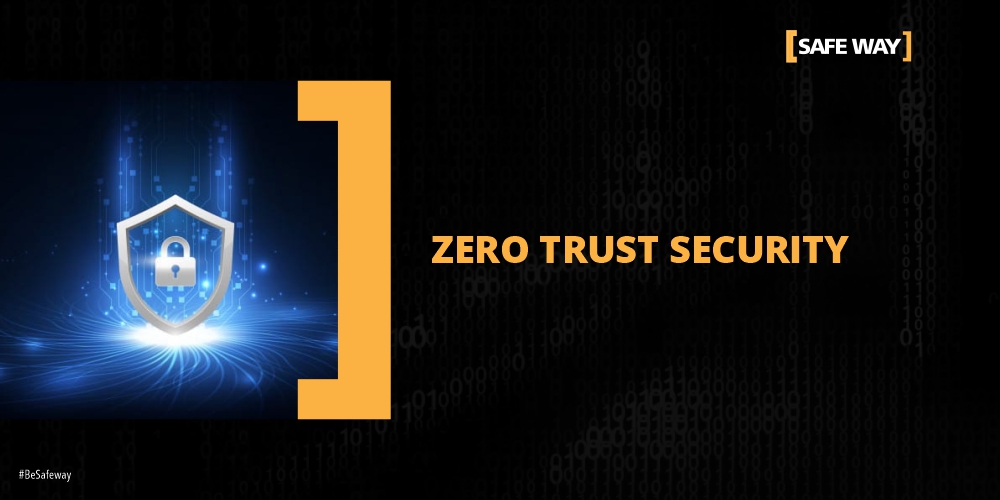*By Felipe Dias
What is Zero Trust?
the definition of Zero Trust is a security model based on the idea that no one is fully trusted and allowed to access company assets until they are validated as legitimate and authorized. When we talk about Security Zero Trust, the idea is to guarantee only the necessary access for each user and technology with their least privileges, which is designed to grant access to resources that users or groups of users require. Additionally, those who have access to the network, data and other assets are continually required to authenticate themselves to ensure security.
Adopting Zero Trust (Zero Trust) soared in response to the rapid increase in mobile and remote workers, the trend towards using their own devices, and the rapid increase in cloud services. While these trends bring benefits and new levels of flexibility to IT, they have also reduced organizations' ability to control and secure access to data and network resources. THE Zero Trust brings that control back by restricting security across a network perimeter.
What are the Zero Trust Principles?
- Grant the Least Possible Privileges
The basic principle of Zero Trust focuses on the idea of granting as few privileges and access as possible without affecting an individual's ability to perform tasks. Only grant access, on a case-by-case basis, to exactly what is needed, and nothing more.
- Never Trust, Always Check
No actions or users are truly trusted within the Zero Trust security model. Every new entry into a system or request to access new data needs to come with some form of authentication to verify the user's identity.
- Always monitor
Finally, Zero Trust requires constant monitoring and evaluation of user behavior, data movements, network changes and data changes. Although authentication and privilege restrictions are the main structures of Zero Trust, it is always better to verify all actions performed within the organization's infrastructure.
What are the Types of Zero Trust and Benefits?
Implementing a zero-trust architecture protects private applications, sensitive data and network assets, while dramatically reducing the risk of malicious insiders and accounts that can be compromised.
There are currently two distinct applications for the Zero Trust model:
- Zero Trust Network Access (ZTNA)
- Zero Trust Data Protection (ZTDP)
What is Zero Trust Network Access?
When designing a zero-trust solution for remote access to an environment, it is often referred to as Zero Trust Network Access (ZTNA), but is also known as Software Defined Perimeter (SDP). A ZTNA or SDP is a modern way of securing network access that uses a cloud-based, software-based approach to replacing hardware VPNs. It creates an overlay network that securely connects users and devices over the Internet to the servers and applications they need in the Data Center or Public Cloud.
Private network access solutions offer the following benefits:
- Effectively protects remote user access;
- Ensures strong authentication;
- Implements effective governance of access to resources;
- Reduces the potential for breach and damages;
- Supports compliance audit initiatives;
- Accelerates a transition to the cloud;
- It transforms security by initiating VPN replacements and adopting software-defined solutions.
Most organizations are adopting a Zero Trust model to provide full visibility and control over users and devices that have access to a growing number of cloud applications and data services. This includes managed applications within a company's ecosystem as well as unmanaged applications used by lines of business and individuals within the corporation.
What is Zero Trust Data Protection?
On the other hand, Zero Trust Data Protection (ZTDP), we can define as an application of the basic principles of zero trust to protect your data against unauthorized viewing, movement, alteration and exfiltration.
The benefits of ZTDP are:
- Permanent risk assessment;
- Data context and sensitivity awareness for better policy enforcement;
- Enables secure access from anywhere;
- Ensures data is protected anywhere;
- Adherence to current compliance standards.
The inclusion of other tools such as analytics platforms and inline visibility into cloud, web and network usage enables administrators to customize Zero Trust rules and prevent unauthorized lateral movement of other datasets. In short, Zero Trust data protection is the first line of defense against unauthorized access and exfiltration of data.
Conclusion:
Although both concepts use Zero Trust, Zero Trust Network Access (ZTNA) is involved in applying the precise model for the purposes of protecting network access, while Zero Trust Data Protection (ZTDP) applies zero trust in protecting the access to data. Both concepts are intended to protect against network intrusions and data exfiltration/alterations.
A zero trust approach can establish trust on every access request no matter where it comes from, secures access across your network applications, and extends trust to support a modern enterprise across a distributed network.
— Felipe Dias is a Cyber Security Consultant at [SAFEWAY]
About Safeway:
THE SAFEWAY is a company of Information security, recognized by its customers for offering high added value solutions, through Information Security projects that fully meet the needs of the business. In these years of experience, we have proudly accumulated several successful projects that have given us credibility and prominence among our clients, which largely constitute the 100 largest companies in Brazil.
Today through more than 23 strategic partnerships with global manufacturers and our SOC, SAFEWAY is considered a one stop shopping with the best technology solutions, processes and people.
Let's make the world a safer place to live and do business!




